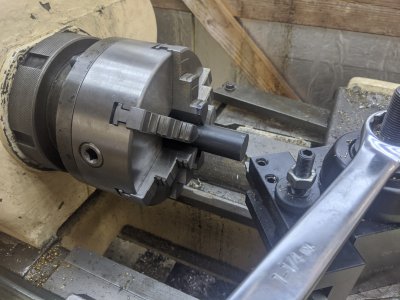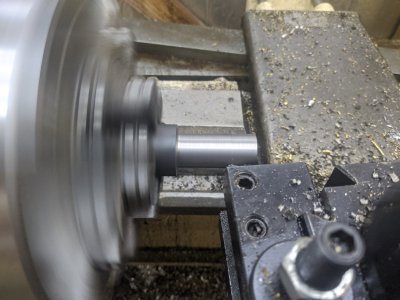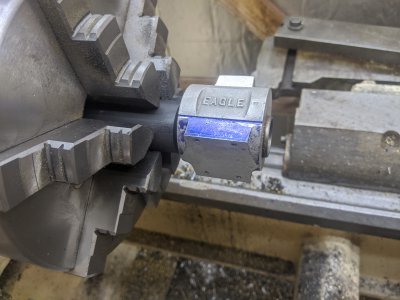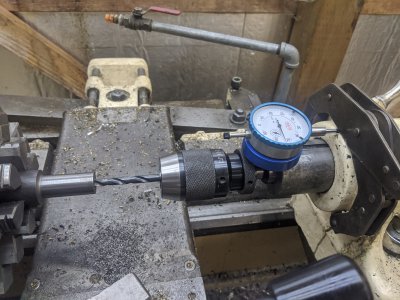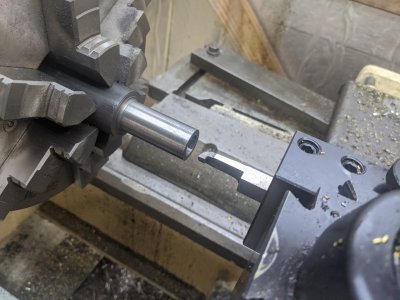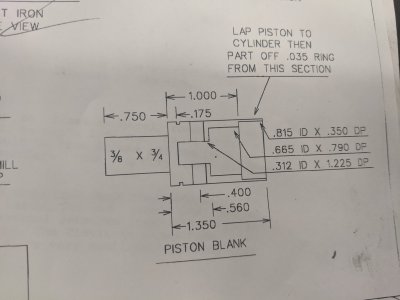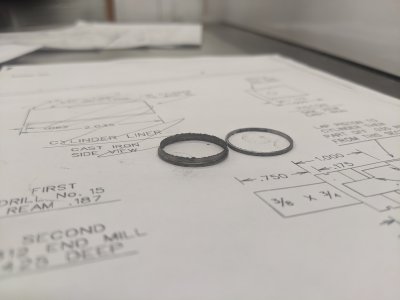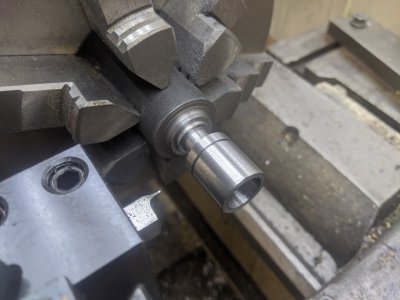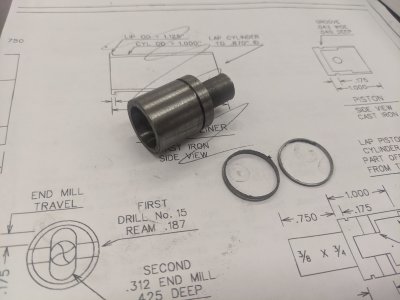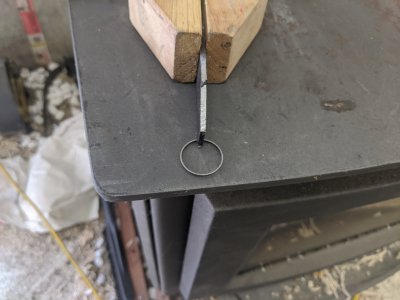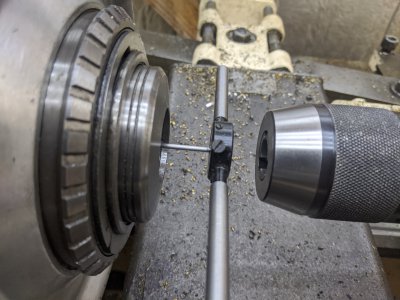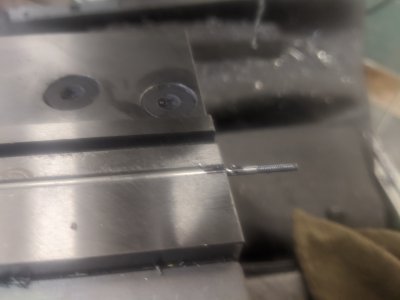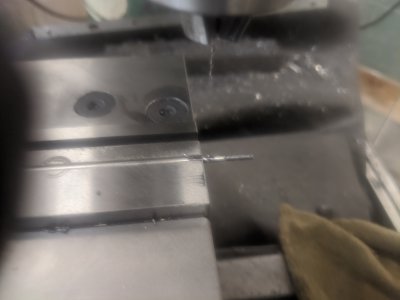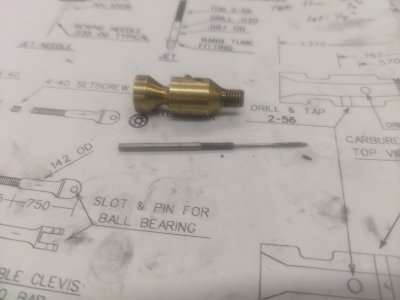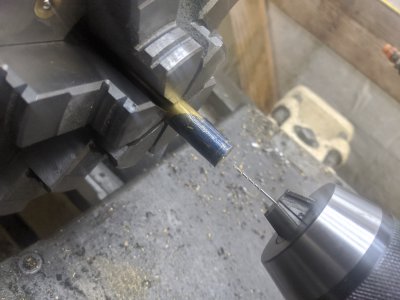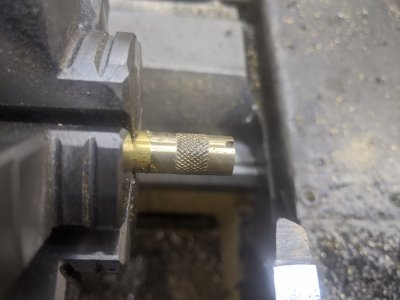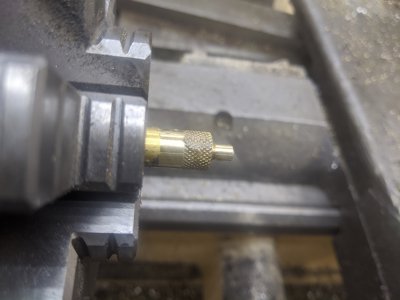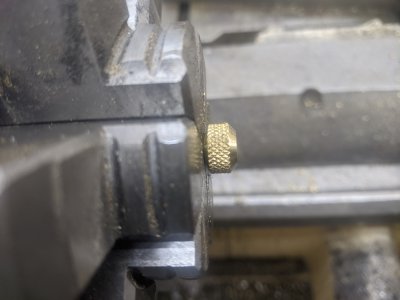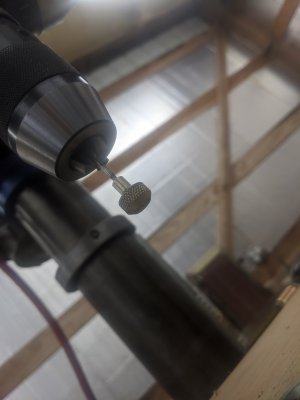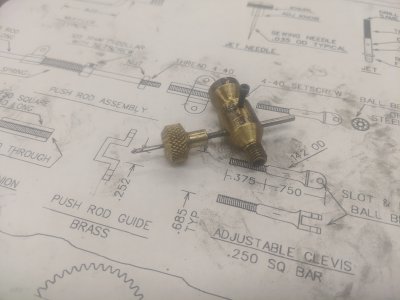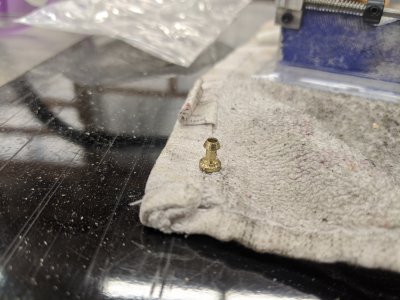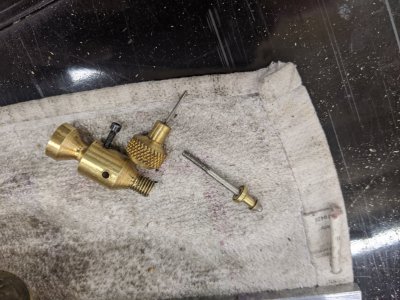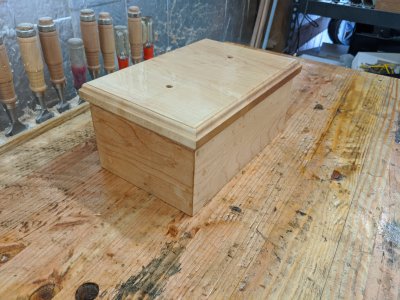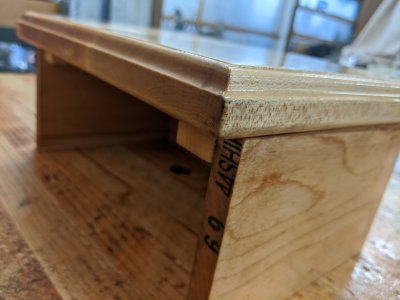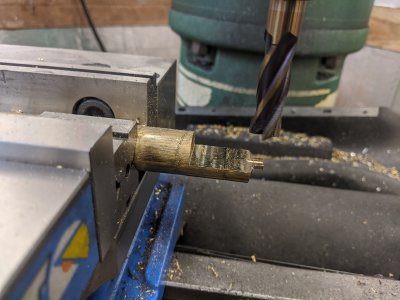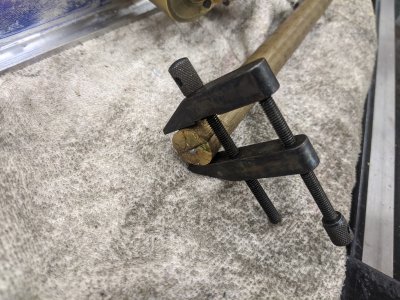Part 35: The end of the Piston, Rings, and Wrist Pin
Ok, so the first task was to cross-drill for the wrist pin 3/16", then ream it. I used the DRO to locate it. This was obviously easy enough!
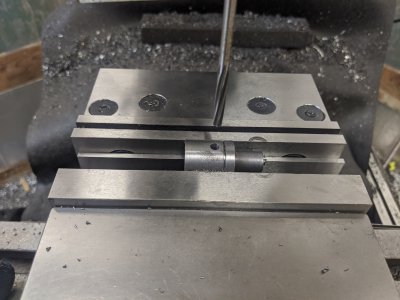
Next I had to flip it upwards to mill out the relief for the rod to go around the wrist pin. I used a 3/16" drill bit and my calipers to get it as straight as possible here. The connecting rod is only 1/4", so the 5/16" slot has a little bit of leeway.
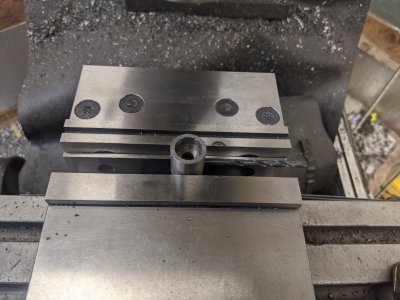
I centered the mill best I could with the coax indicator. I'm sub-1/2 thou as best as I can tell.
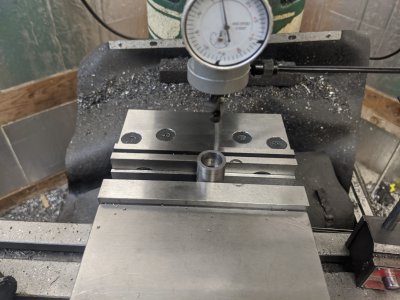
The plans say to cut this ".425" deep, which didn't really make sense. Based on the dimensions, I couldn't find any reference-point to measure that off of that either wouldn't do anything, or would leave only 10 thou of material at the end of the piston. I DID note that the drawing still had the drill-bit circle there, so I milled until I was just about bottomed out in the drill bit. The plans ALSO call for the endmill to move .175 off center, which seemed excessive to me as well. The end of the connecting rod is 3/8" (I might thin that out if necessary!), and that would make the slot .662. I instead went .155, which left a slight bit of material before it got into the skirt. I didn't really want to cut into the skirt, which .175 gets you to at least rubbing.
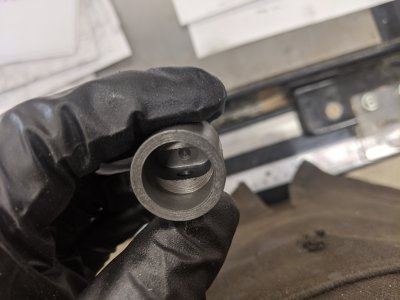
Finally, I turned the front flat. I didn't end up having to use this arbor-part for anything, so it ended up being just a waste of ~1" of cast iron! I lined the jaws with an aluminum sheet stock that I had.
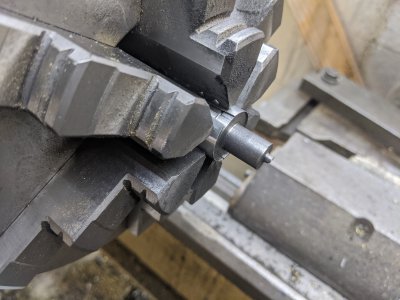
AND the piston is complete! Sitting on the two ring-candidates.
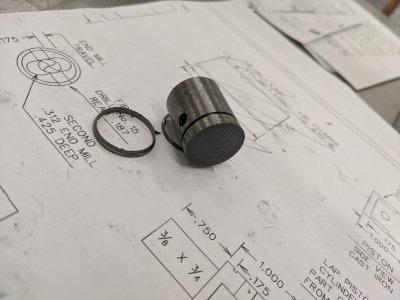
I was fortunate and was able to peel the extra material off of the 1 ring, and using a bit of 500 grit paper got it flattened. I was happy to have 2 tries at getting the ring right

The first I used a set of angle cutters, and a ~50 thou piece broke off. I went through the whole process, and actually got a ring I was reasonably happy with, though it had a large gap. SO, I decided to try making the 2nd one. I used a slightly different technique with the angle cutters (I cut at 90 degrees to the ring, rather than parallel), and very little broke out!
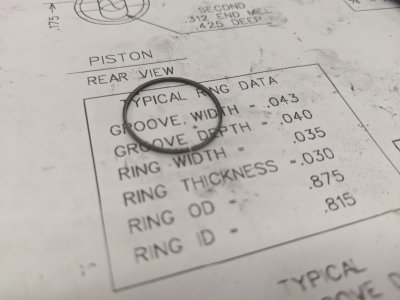
The instructions suggest using a magnet to place the ring on, using a piece of material to 'split' it open a little, then heating the end with a lighter until blue. I didn't have a magnet that I dislike enough to use the flame on it, so I did this. I used a washer of the right thickness to hold the ring open, and this piece of metal to hold it flat. About 20 seconds of flame turned it nice and blue!
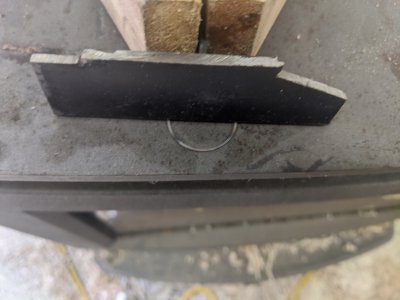
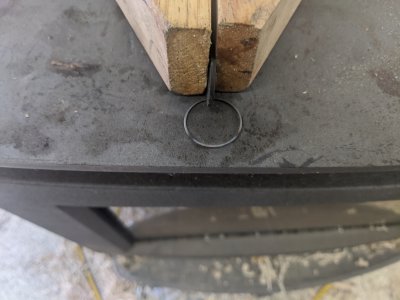
And installed!
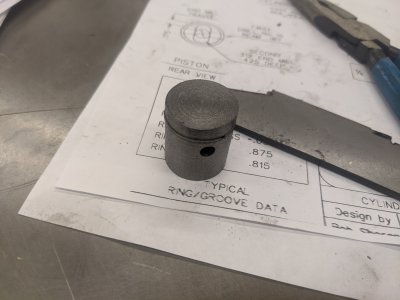
Finally, when I was at Ace I found a 3/16" ground pin, 1" long. I need ~.825 (I ended up at .850, but it doesn't hit the cylinder walls), so I hit it with the grinder to get it to length.
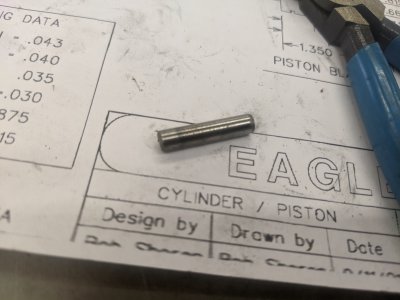
And that was it for the day! I realized I used the piece of stock I wanted to use for the connecting rod on a different project, so I have to order material! I have some brass and aluminum on the way, I haven't decided what I want yet. They won't come until next weekend, so it might end up being the last item holding me up


 www.mcmaster.com
www.mcmaster.com


